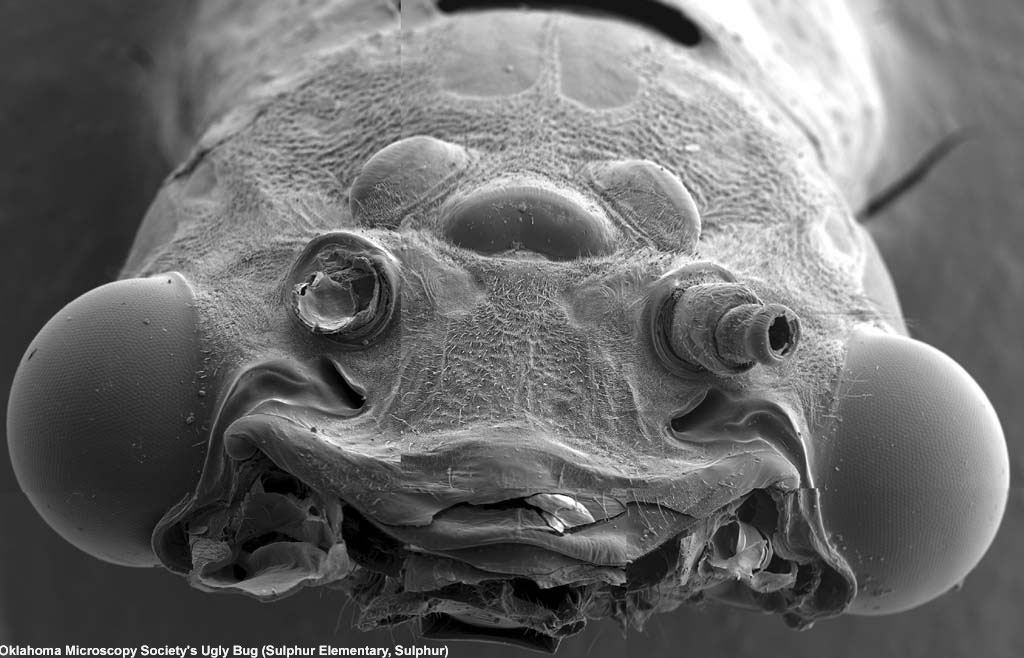
Dobsonfly
This is a Dobsonfly magnified 10 to 500 times
The Dobsonfly, also known as “The King Bug” for its kingly features and intimidating tusks, is an insect of the subfamily Corydalinae, part of the megalopteran family Corydalidae. The most well-known species is Corydalus cornutus, the Eastern Dobsonfly. This is a long, dark-colored insect found in North and Central America. Their closest relatives are the fishflies.
Dobsonfly description
Both male and female dobsonflies can reach lengths up to five inches (12.5 cm), measured from the tips of their pincers to the tips of their four wings. Their wingspans can be twice as long as their body length. The wings are densely lined with intersecting veins. When not in use, the wings are folded along the length of their walkingstick-like bodies. Dobsonflies have segmented antennae similar to ants and wasps.
Though both male and female dobsonflies have sharp mandibles, those of an adult male dobsonfly are actually so big – up to 1 inch (25 mm) – that they are unable to harm humans, as they have such poor leverage that they are incapable of breaking the skin. Their mandibles are used exclusively during mating, where males show them off and grasp the females during copulation. Female dobsonflies, however, retain the short, powerful pincers they had as larvae, so they can inflict painful bites, which can draw blood. Not withstanding the males’ inability to inflict harm, when threatened both sexes will raise their heads and spread their jaws menacingly. They are not poisonous, but possess an irritating, foul-smelling anal spray as a last-ditch defense.
Both male and female dobsonflies can reach lengths up to five inches (12.5 cm), measured from the tips of their pincers to the tips of their four wings. Their wingspans can be twice as long as their body length. The wings are densely lined with intersecting veins. When not in use, the wings are folded along the length of their walkingstick-like bodies. Dobsonflies have segmented antennae similar to ants and wasps.Though both male and female dobsonflies have sharp mandibles, those of an adult male dobsonfly are actually so big – up to 1 inch (25 mm) – that they are unable to harm humans, as they have such poor leverage that they are incapable of breaking the skin. Their mandibles are used exclusively during mating, where males show them off and grasp the females during copulation. Female dobsonflies, however, retain the short, powerful pincers they had as larvae, so they can inflict painful bites, which can draw blood. Not withstanding the males’ inability to inflict harm, when threatened both sexes will raise their heads and spread their jaws menacingly. The Dobsonfly is not poisonous, but possess an irritating, foul-smelling anal spray as a last-ditch defense.







